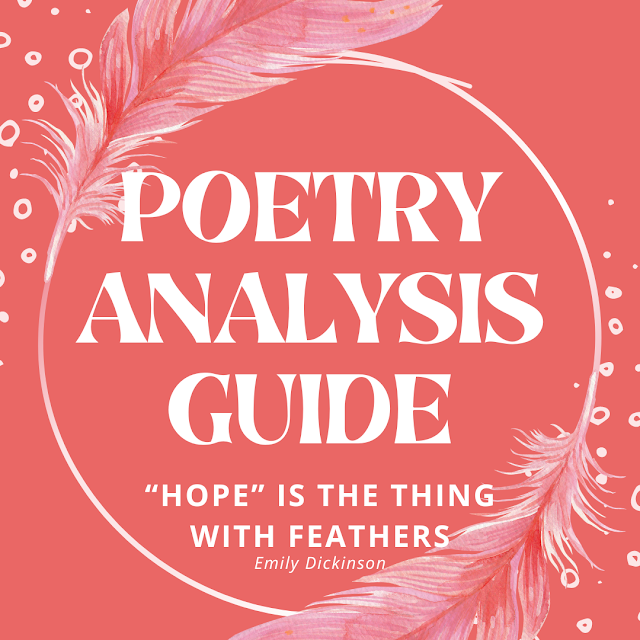Teaching poetry can be a daunting task, especially when met with reluctance from students. However, there's a jewel among the verses that can transform your poetry lessons and captivate even the most hesitant of students - Emily Dickinson's '"Hope" is the Thing with Feathers.' In this guide, we'll explore key ways to teach this timeless poem, overcome common teaching challenges, provide tips for analyzing poetry, delve into teaching literary analysis, and underscore the importance of Emily Dickinson in the literary canon.
Here's the best part...I've included a FREE lesson to teach the entire poem. Learn about it below, or download it right here.
Check out these easy steps for teaching '"Hope" is the thing with feathers'...
1. Build Background
Before students begin to read and analyze the poem, discuss the historical context of the poem, introduce students to the enigmatic life of Dickinson, and explore the symbolism of hope as a bird.
One fun way to build background is to have students to work in groups as they rotate to different learning stations. The first station might introduce students' to Emily Dickinson's early life as they practice sequencing skills. Then, students can learn about Emily's writing years and her later years at different stations where they practice cause and effect and finding meaning in context. Finally, students could investigate interesting facts about Dickinson. Learning stations help students connect the poet's life and experiences with the broader context in which she lived. (You can grab ready-made stations in this "Who was Emily Dickinson" author study and poem analysis resource.)
2. Make Poetry Accessible
It's true that many students find reading and analyzing poetry a bit overwhelming. However, I've found that by breaking down the poem into smaller sections encourages students to explore its layers gradually.
My favorite way to help students delve deeper into the analysis is with poetry flip books. The flip book provides an interactive way to guide students through progressively more challenging analysis tasks. Each task is a associated with a different reading of the poem, so it naturally encourages close reading of the text. In the FREE lesson, students will review vocabulary, figurative language, poetry form, and analysis in the flip book. Don't forget to download it here.
3. Connect Poetry to Life
One way to make poetry more approachable is by helping students build connections to the message in the poem. After students have a chance to analyze the poem, help them connect '"Hope" is the thing with feathers' to their own experiences. Discuss moments of hope in their lives and how the poem resonates with these experiences.
------------------------------------------------------------
With these easy steps (and the free lesson plan), you'll have a chance to instill a love for literature in your students. By understanding who Emily Dickinson was, what the poem is about, and how the poem relates to their own lives, students can unlock the beauty of poetry in their lives.
Ready to give this poem a chance? Download the free lesson plan and resources to dive deeper into the magic of '"Hope" is the thing with feathers."
Thanks for stopping by!
Mary Beth
P.S. I've compiled my FAVORITE poems to teach in this blog post.






No comments:
Post a Comment